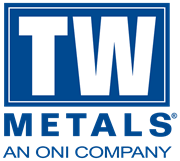Infrastructure Report: Gearing Up For Growth
The combination of the need for investment and the promise of federal, state and local funds has resulted in a good deal of infrastructure optimism about the next several years. Signs are positive for public investment and the steel and other metals used for the various projects that are either under way or are on the drawing board. But at this point the actual push from such landmark legislation as the Infrastructure Investment and Jobs Act and the Inflation Reduction Act is still in early stages.
The dynamics of the infrastructure construction sector tend to be somewhat different than those for construction in general, observes Paolo Frediani, a senior steel analyst for Fastmarkets. He notes that while overall U.S. construction activity, which is still currently fairly healthy, is likely to slow down going forward, that isn’t necessarily the case for infrastructure builds, which don’t tend to correlate as strongly with macroeconomic factors. As such, helped by the additional monies from the IIJA and IRA and other sources, Frediani believes that U.S. infrastructure construction activity will be up somewhat this year and will see even stronger growth over the next five years or so.
Ken Simonson, chief economist for the Associated General Contractors, says that over the past year public works construction spending has been quite strong, increasing 11% year on year in January. That, he observes, included a 16.4% increase for highway and street, a 3.1% increase for transportation, a 16% increase for sewage and waste disposal, a 17% increase for water supply and a 21.5% increase for conservation and development. Moreover, that spending was largely unrelated to recent federal legislation, including the IIJA, but rather because many states and local governments have record, or near-record surpluses and “rainy day” funds. Therefore, they can invest more money into their infrastructure.
This, he says, is not only the case for roads and bridges, but other transportation infrastructure, including airport, port and harbor and rail. This is taking place despite all of the macroeconomic and recessionary fears in the marketplace, worries somewhat mitigated by the lift they have gotten from COVID pandemic relief funds and recent job recovery, says Philip Gibbs, a metals equity analyst for KeyBanc Capital Markets.
“Highway and bridge construction has been steady over the past 10 years,” Alison Premo Black, senior vice president and chief economist for the American Road & Transportation Builders Association, points out. Supported by the previous federal highway bill – the Fixing America’s Surface Transportation Act – as well as other federal, state and local government funding mechanisms, investment in already under way for highway and bridge construction projects. With little help from the IIJA, that spending reached a record level by the end of 2022 with a full-year increase of about nine%. Black says the states and local governments were motivated to increase their own revenue sources through gasoline and other sales taxes, public-private partnerships and/or bond issues because of such factors as growing population, higher economic activity and deteriorating infrastructure conditions.
“The additional funding (particularly federal) for the U.S. infrastructure market is long overdue,” says Veronika Akhmadieva, an American economist for CRU, noting that while state and local government spending was up 2.3% in 2022, total federal public works spending was down 21.3% year on year.
Source: Metal Center News, 04.24.2023
To continue reading more articles this month, check out our full Market Insight.


